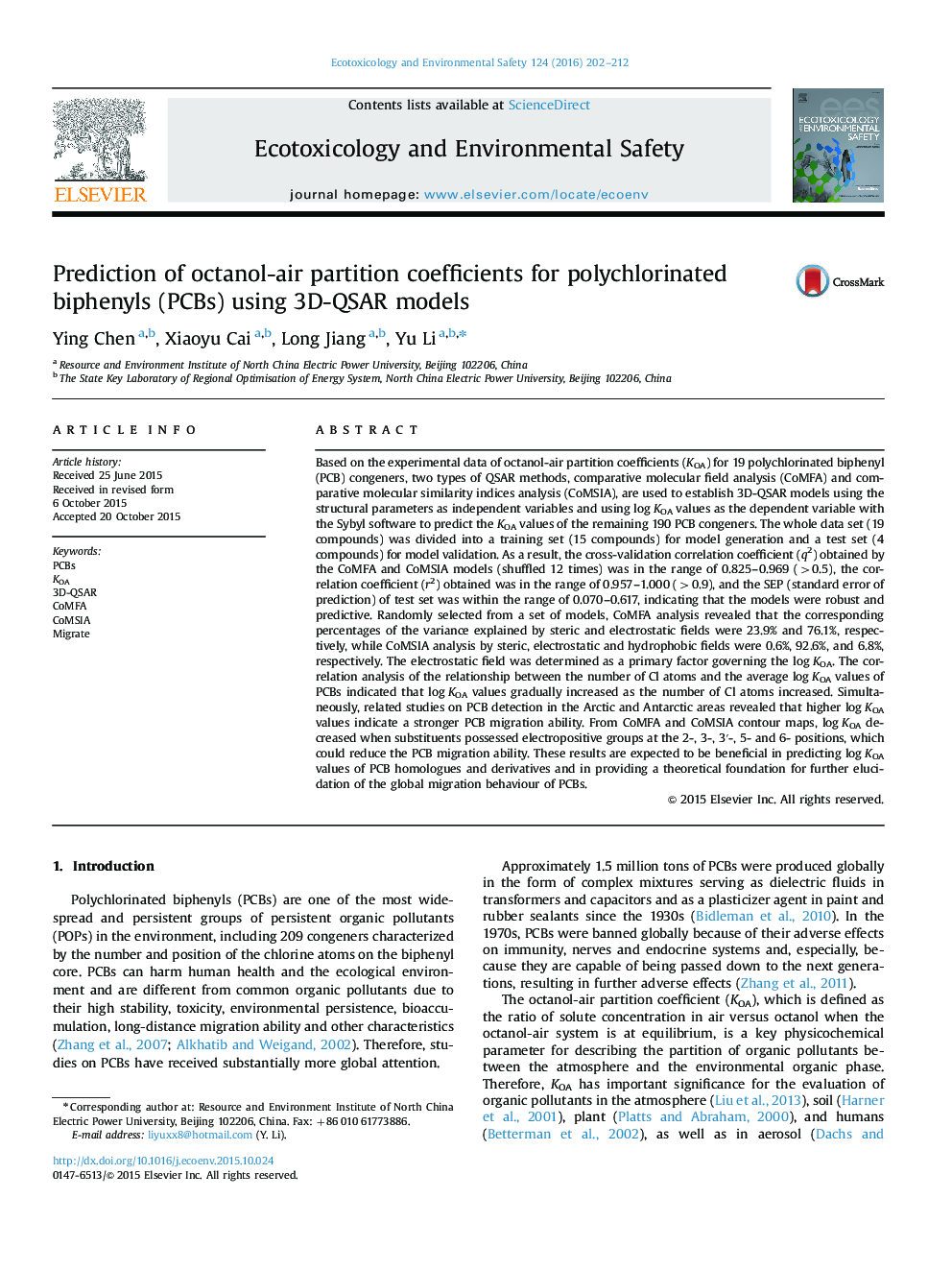| کد مقاله | کد نشریه | سال انتشار | مقاله انگلیسی | نسخه تمام متن |
|---|---|---|---|---|
| 6311986 | 1618939 | 2016 | 11 صفحه PDF | دانلود رایگان |
عنوان انگلیسی مقاله ISI
Prediction of octanol-air partition coefficients for polychlorinated biphenyls (PCBs) using 3D-QSAR models
دانلود مقاله + سفارش ترجمه
دانلود مقاله ISI انگلیسی
رایگان برای ایرانیان
موضوعات مرتبط
علوم زیستی و بیوفناوری
علوم محیط زیست
شیمی زیست محیطی
پیش نمایش صفحه اول مقاله

چکیده انگلیسی
Based on the experimental data of octanol-air partition coefficients (KOA) for 19 polychlorinated biphenyl (PCB) congeners, two types of QSAR methods, comparative molecular field analysis (CoMFA) and comparative molecular similarity indices analysis (CoMSIA), are used to establish 3D-QSAR models using the structural parameters as independent variables and using log KOA values as the dependent variable with the Sybyl software to predict the KOA values of the remaining 190 PCB congeners. The whole data set (19 compounds) was divided into a training set (15 compounds) for model generation and a test set (4 compounds) for model validation. As a result, the cross-validation correlation coefficient (q2) obtained by the CoMFA and CoMSIA models (shuffled 12 times) was in the range of 0.825-0.969 (>0.5), the correlation coefficient (r2) obtained was in the range of 0.957-1.000 (>0.9), and the SEP (standard error of prediction) of test set was within the range of 0.070-0.617, indicating that the models were robust and predictive. Randomly selected from a set of models, CoMFA analysis revealed that the corresponding percentages of the variance explained by steric and electrostatic fields were 23.9% and 76.1%, respectively, while CoMSIA analysis by steric, electrostatic and hydrophobic fields were 0.6%, 92.6%, and 6.8%, respectively. The electrostatic field was determined as a primary factor governing the log KOA. The correlation analysis of the relationship between the number of Cl atoms and the average log KOA values of PCBs indicated that log KOA values gradually increased as the number of Cl atoms increased. Simultaneously, related studies on PCB detection in the Arctic and Antarctic areas revealed that higher log KOA values indicate a stronger PCB migration ability. From CoMFA and CoMSIA contour maps, log KOA decreased when substituents possessed electropositive groups at the 2-, 3-, 3â²-, 5- and 6- positions, which could reduce the PCB migration ability. These results are expected to be beneficial in predicting log KOA values of PCB homologues and derivatives and in providing a theoretical foundation for further elucidation of the global migration behaviour of PCBs.
ناشر
Database: Elsevier - ScienceDirect (ساینس دایرکت)
Journal: Ecotoxicology and Environmental Safety - Volume 124, February 2016, Pages 202-212
Journal: Ecotoxicology and Environmental Safety - Volume 124, February 2016, Pages 202-212
نویسندگان
Ying Chen, Xiaoyu Cai, Long Jiang, Yu Li,